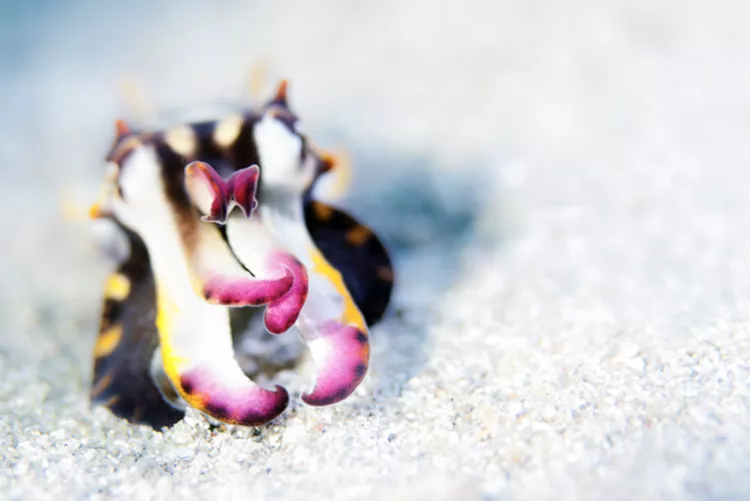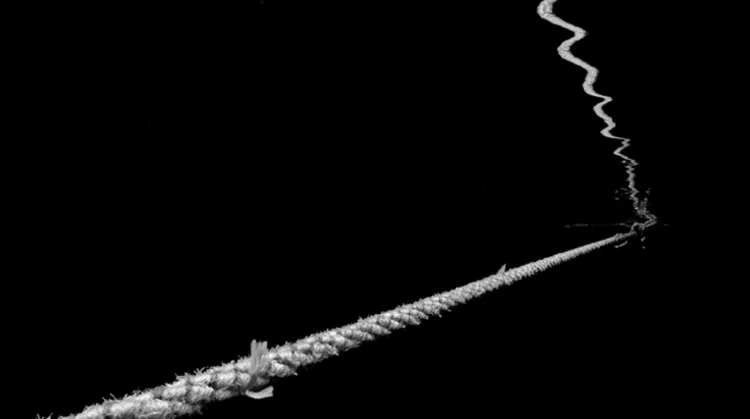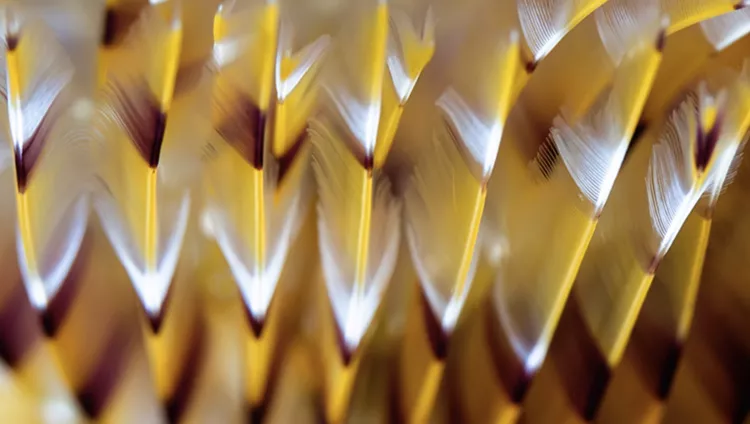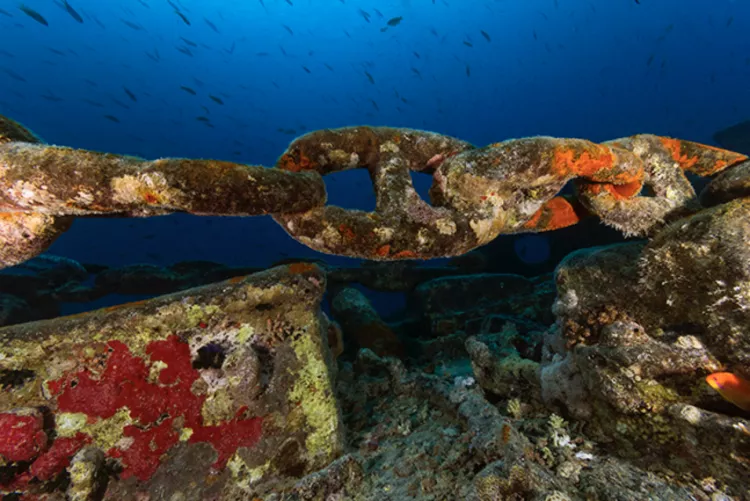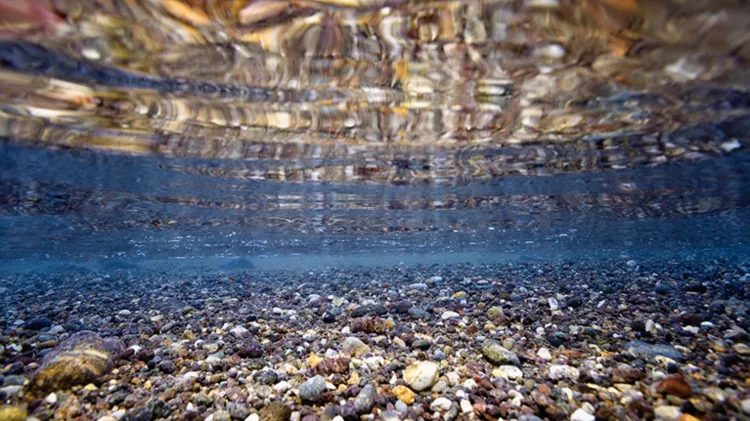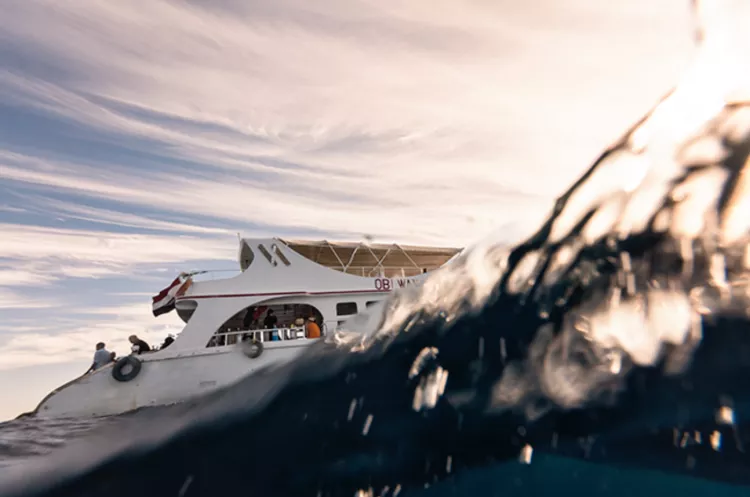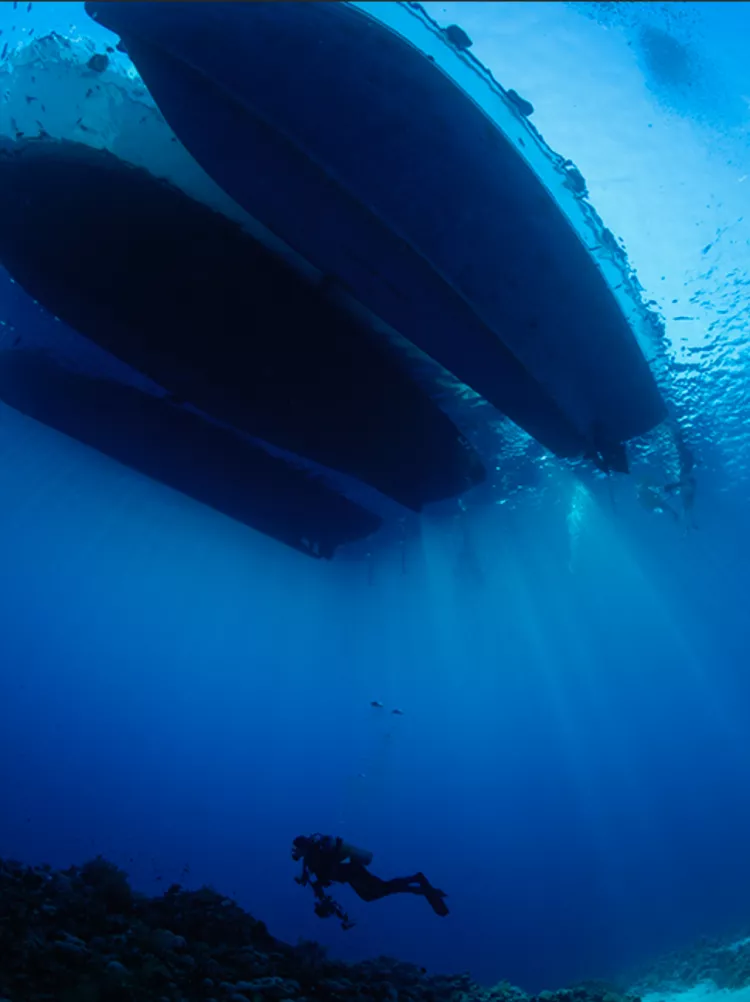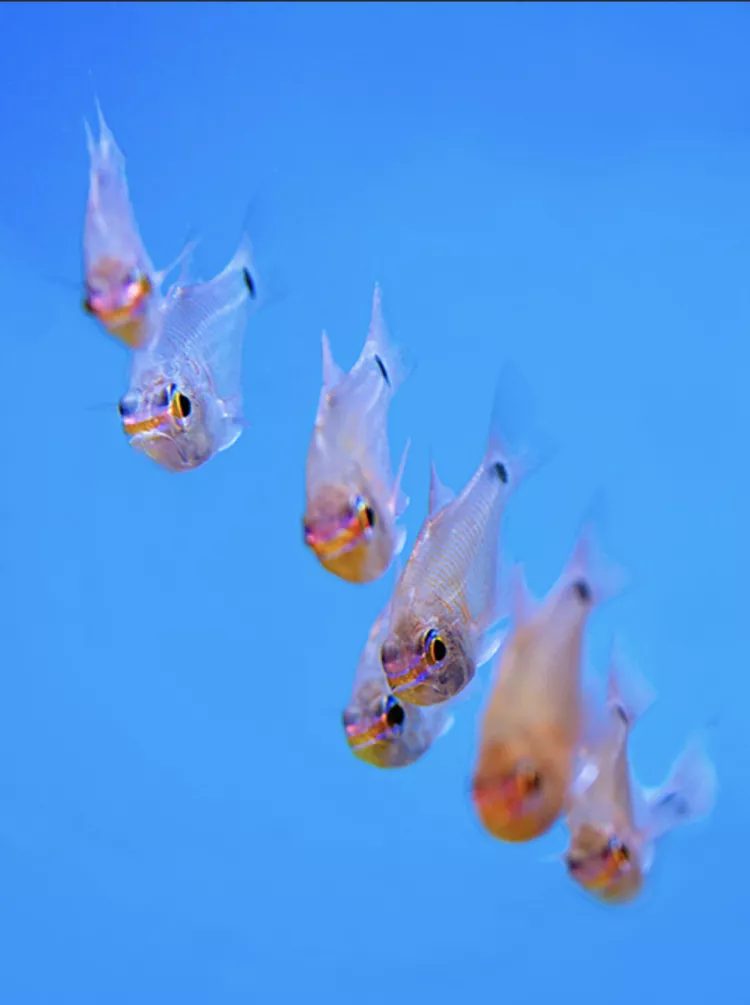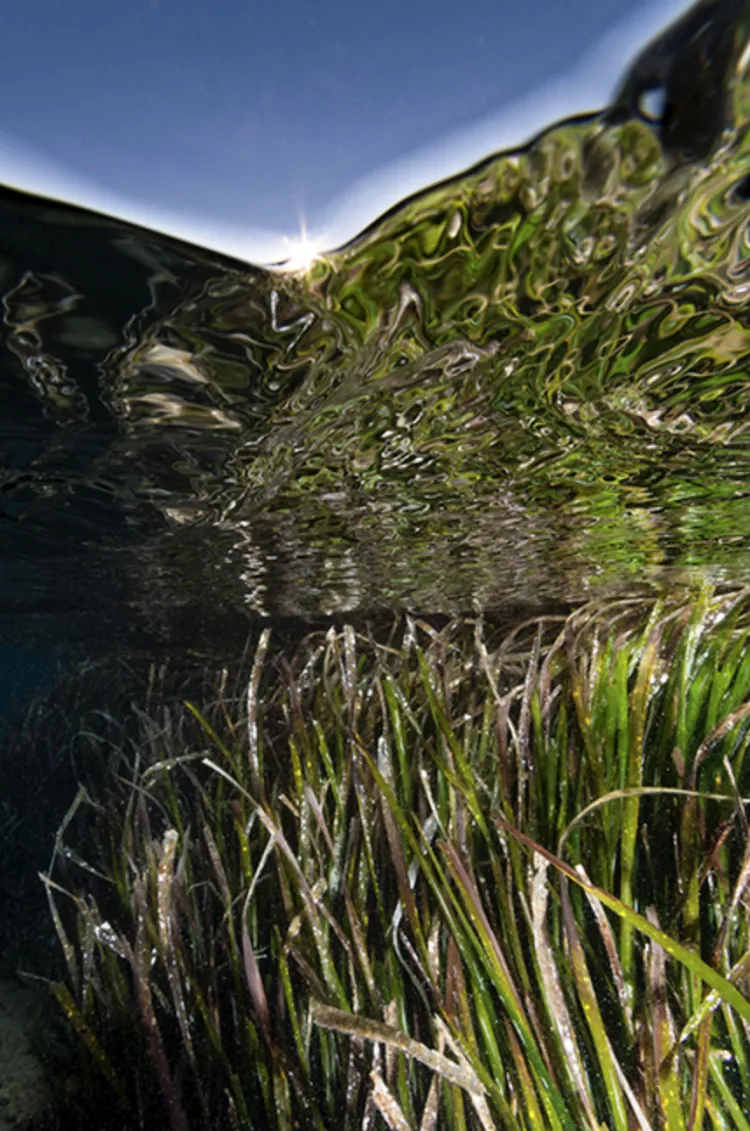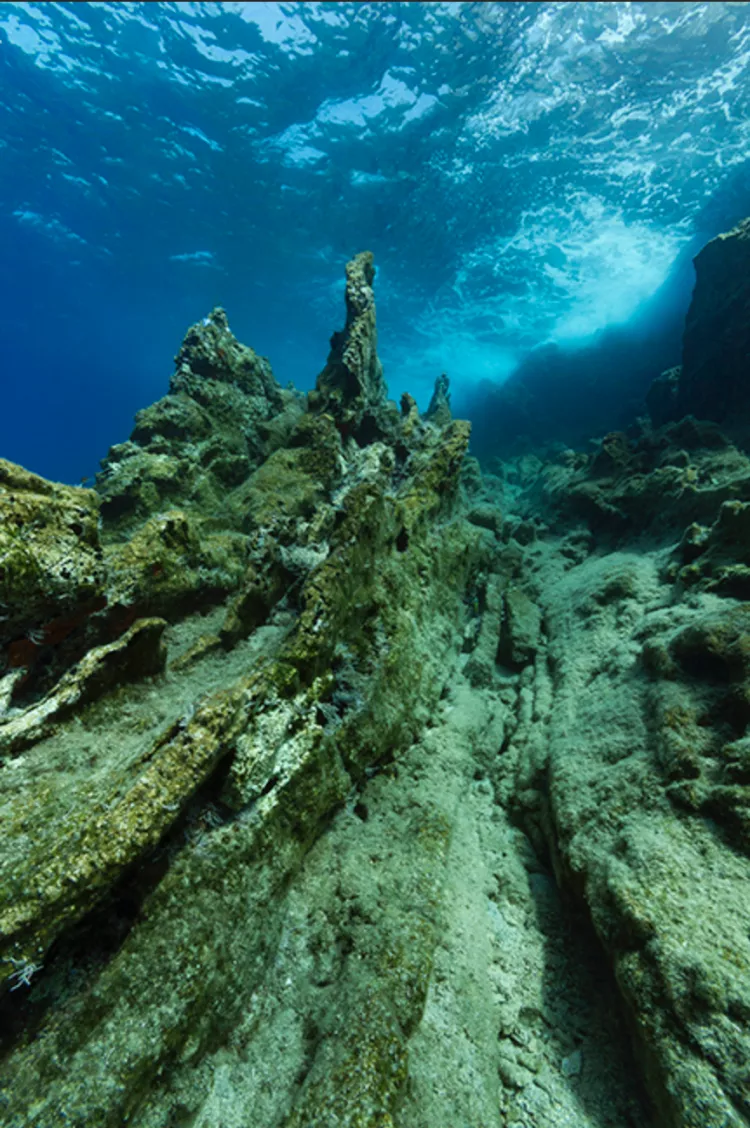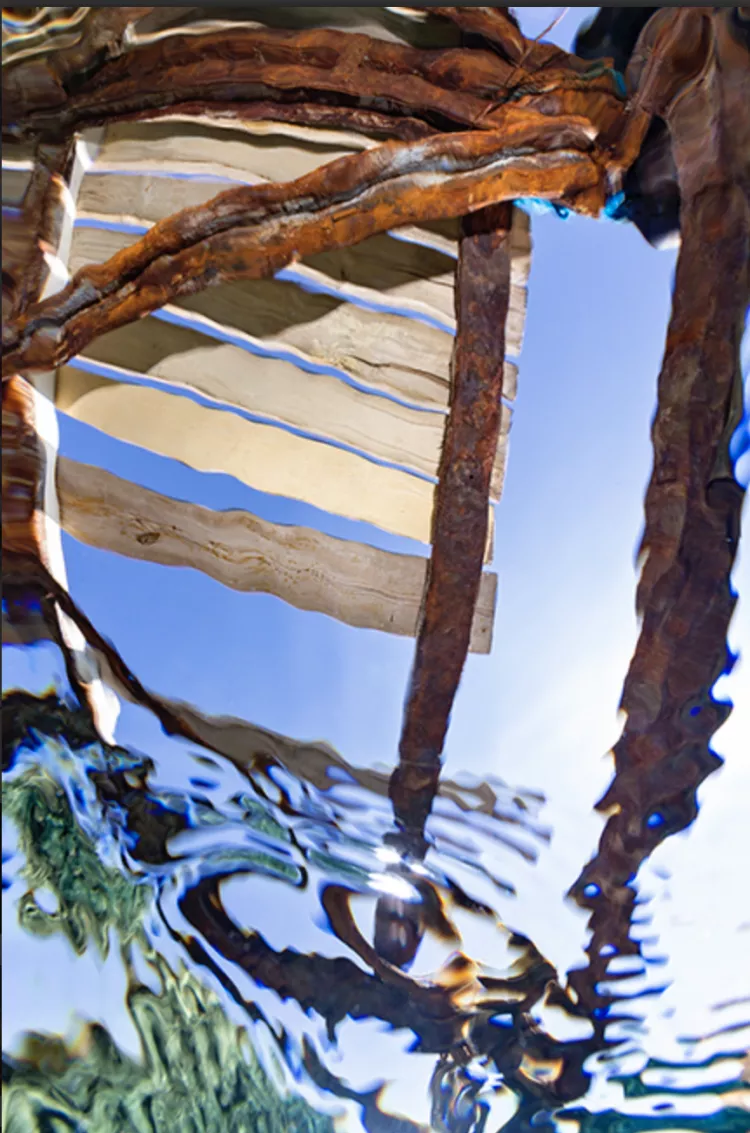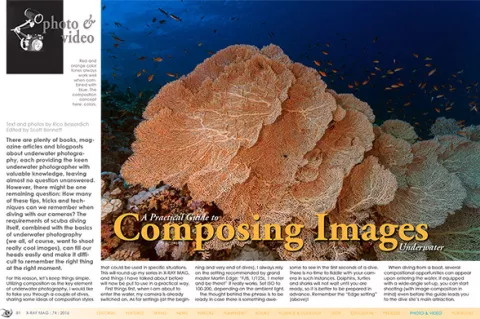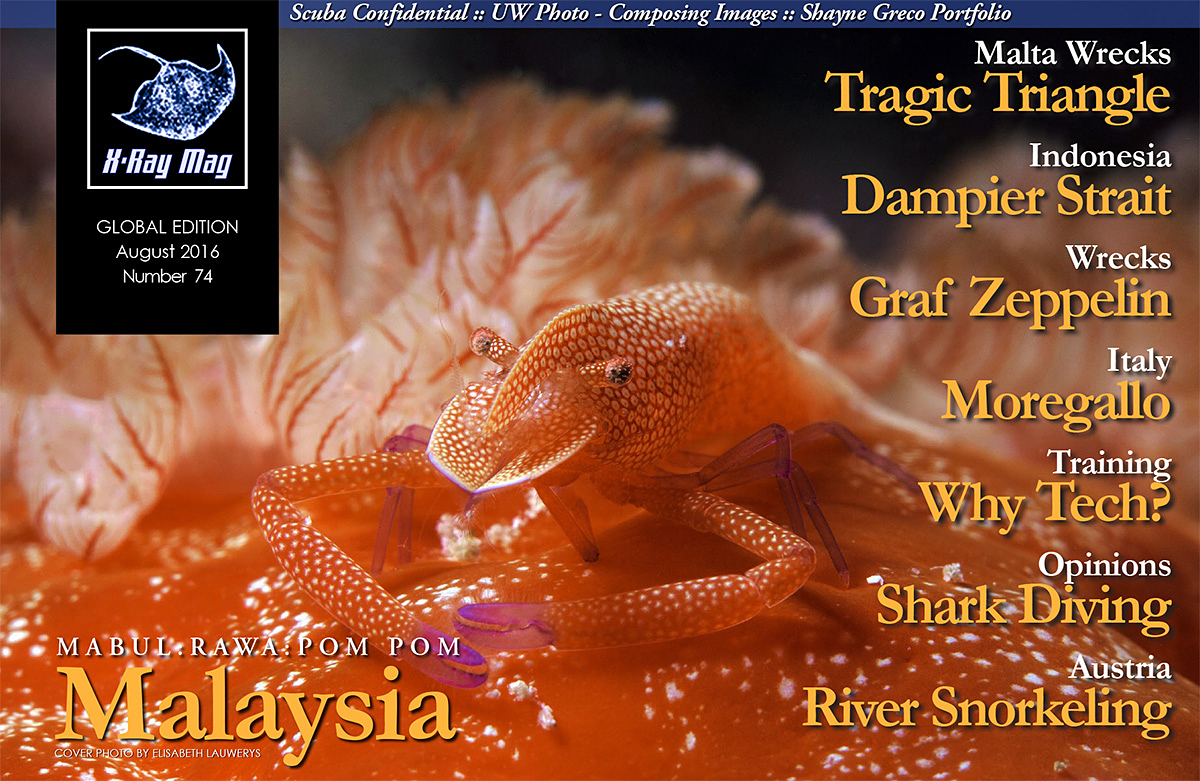There are plenty of books, magazine articles and blogposts about underwater photography, each providing the keen underwater photographer with valuable knowledge, leaving almost no question unanswered. However, there might be one remaining question: How many of these tips, tricks and techniques can we remember when diving with our cameras?
Contributed by
The requirements of scuba diving itself, combined with the basics of underwater photography (we all, of course, want to shoot really cool images), can fill our heads easily and make it difficult to remember the right thing at the right moment.
For this reason, let’s keep things simple. Utilizing composition as the key element of underwater photography, I would like to take you through a couple of dives, sharing some ideas of composition styles that could be used in specific situations. This will round up my series in X-Ray Mag, and things I have talked about before will now be put to use in a practical way.
First things first, when I am about to enter the water, my camera is already switched on. As for settings (at the beginning and very end of dives), I always rely on the setting recommended by grand master Martin Edge: “F/8, 1/125s, 1 meter and be there!” It really works. Set ISO to 100-200, depending on the ambient light.
The thought behind the phrase is to be ready in case there is something awesome to see in the first seconds of a dive. There is no time to fiddle with your camera in such instances. Dolphins, turtles and sharks will not wait until you are ready, so it is better to be prepared in advance. Remember the “Edge setting” (above)!
When diving from a boat, several compositional opportunities can appear upon entering the water. If equipped with a wide-angle set-up, you can start shooting (with image composition in mind) even before the guide leads you to the dive site’s main attraction.
At the surface
For example, shots of the dive boat and divers entering the water are ideal for using contrast and shapes as compositional concepts. Think of a split shot with the boat in the upper half and the water (with a diver jumping into it, if you are fast and lucky) in the lower half. The boat provides an interesting shape, and the sun will add strong contrast. Anchor chains and ropes are ideal for shots using lines as compositional elements, creating tension in the image, if the ground is visible.
Just centimeters beneath the surface, the colors of the water, plus reflections on the surface, provide nice photo opportunities (preferably on sunny days with lots of ambient light and no strobes). Work with colors and contrast as elements of composition.
Noticed something? Yes, we have not even commenced the dive yet but have already taken some pretty nice shots. Okay, now let’s descend!
During descent
Usually, everyone wants to descend quickly. Be it a reef, a wreck or whatever the main attraction might be, I have seen plenty of divers descend like stones and swim like torpedoes to be the first at a dive spot, in search of something fancy to shoot. Just a suggestion, but let’s slow down a bit and let’s stop somewhere at 6-10m during our descent. Now, let’s look up.
If the sun shines and the visibility of the water is good (+20m), the dive boat itself works well as a subject. Think of a silhouette (the boat itself) and there you have a nice shape for composing an interesting shot. Now add the sun, placing it behind the boat, so it is not visible in frame. The sun’s rays will add pleasing lines to your image. Shapes, contrast and lines. That’s it. No strobe needed.
Snell’s window
Alternate subjects are other divers or larger sea animals. Shooting upwards at an extreme angle reveals the effect of “Snell’s Window”, another useful geometric shape that benefits image composition.
Even if the underwater visibility is not so bright, such a compositional concept is still worth a try. Just add a bit “mystic fog” to your image (caused by low visibility). Not every good photograph must be tack-sharp with endless depth of field.
At depth
Now we have reached our final depth. Be it a coral or rocky stone reef, wreck or just some muck where you hope to find small macro subjects, if we slow down a bit and think about composition, there are plenty of opportunities.
To prevent confusion when shooting underwater, it is very helpful to make a plan prior to entering the water. The key to any good photograph is always the photographer’s intention.
If you are photographing a very rare or unknown marine species, or are the first to shoot a newly-found shipwreck, no one cares much for composition or any trials of creative. That’s okay, because the purpose is to document the subject or scene as clearly and realistically as possible. Photojournalism demands a different approach, but the very best pieces of photojournalism often come with outstanding composition.
However, let’s leave documentation photography aside for a moment. This article is about how to use composition as a creative tool in photography, regardless of the subject. Photojournalism and proper nature and wildlife documentation = a different story. So, let’s consider for this dive that our intent is to use composition as the main element.
Coral reefs
If you like colors (and who doesn’t?), you may want to take a moment and think about how to use the right combination of colors in your photography. Colors are a very powerful tool in image composition. It often works best to keep things simple. Less is more. Instead of looking for the most colorful things swimming around, crawling or growing somewhere, take a moment and look out for color combinations.
All red tones (which includes orange as well) do pop in the image when combined with blue, kindly provided by the water itself (in the sea).
Yellow and green can sometimes be tricky colors. They look best in an image if the color tone is a bright. Darker yellows (fire corals) and darker greens (algae) are often perceived as slightly unpleasing by the viewer.
Instead of many colors, use only one color but with different levels of brightness. Imagine the different red tones of some corals. Some corals do have beautiful shapes and to concentrate on them (photographed as a silhouette, for example ) can result in very pleasing images.
Macro fans might find it interesting to look out for patterns. Closer scrutiny of corals can reveal very interesting details. Patterns, lines and colors can make excellent abstract photographs.
Stone reefs
Rocky reefs, very common in the Mediterranean Sea, often form fabulous underwater landscapes. Look out for nice structures and shapes; there are plenty.
The Mediterranean Sea provides variations of blue tones that you can’t see anywhere else in the world. Think about using just the blue tones as elements of composition. Remember when using colors to compose an image, you do not always need very fancy subjects. In shallow water, the sun often draws beautiful patterns on the rocks. Remember patterns and lines as elements of composition.
Wrecks
Wrecks provide plenty of opportunities when it comes to image composition. Shapes and structures are strong elements here, and so are lines. Once you dive a wreck with the intention to realize specific composition concepts (no more trucks, motorbikes or R2D2’s), you will be surprised by how many virgin photographic opportunities are awaiting your discovery. Dive a wreck with the idea of shapes in mind. Or just go for structures. Suddenly, even the most-dived wrecks in the world can transform into a photographic Garden of Eden.
Just sand or pebbles
(I want my money back!!) There might be areas like the dive center’s highly-praised house reef, which appears to be an an empty desert. No fish, no subjects—only sand or pebbles. But before you file a complaint or are about to get kicked out of the dive center because of nasty words: Look again!
Once you stop swimming around searching for things to shoot (remember the aforementioned “torpedo divers”), have a look around; you will be able to see that desert-like environment with different eyes. Don’t forget, you are a photographer. You can create stunning images where there may be nothing special to see at first glance. In “desert waters” the average diver sees nothing, but the photographer (you!) is looking at the world with different eyes.
Sand forms shapes. Shapes (to stick with image composition) are always interesting and photographic aspects of value. The sun draws lines on sandy ground. Beautiful lines.
In extremely shallow and calm water, sand might reflect on the water’s surface allowing stunning “mirror style” shots. Angel Fitor, PRO photographer from Spain and former BBC Wildlife Photographer of the Year and European Wildlife Photographer of the Year (now in the panel of judges) created such shots, and they are beyond imagination. So don’t complain about sand. Sand can be very attractive.
Pebbles might look boring at first glance, but if you look closer, you will see that no pebble looks the same. It’s all about form, shapes and structures. Add some light (in my experience, late afternoon light is nice), stay shallow (shoot with ambient light) and enjoy your pebbles!
In shooting environments like this, you might sometimes end up with abstract photographs. But that’s okay. The power is in your hands to create beauty that no one else sees.
Ascending
I have seen many underwater shooters who have turned off their cameras and “packed” their gear at 20m because they think the dive is almost done and they must ascend for that boring safety and/or deco stop. A word of advice: Never do such a thing! You never know what awesome photographic opportunity will appear during your ascent. My own camera stays switched on until I am back on the boat (or back on land).
If ascending on a rope or anchor chain, here is your second chance to do something with lines. In case the sun was not ideally positioned when the dive began, you now have a second chance to shoot the boat’s silhouette (or anything else of interest in the blue), working with shapes as a compositional element.
If your safety stop is done but you still have some air left, you might have a look to the dive boat’s hull. Macro shooters can find nice little surprises here, and wide-angle shooters might spot barracudas right beneath the boat. Or just shoot the boat’s propeller, working with the composition concept of shapes. This subject can be very good for strong contrast images. But please check with the captain beforehand; not all of them are happy to see you swimming below their boat. As always: Safety first.
Once you start to focus more on composition and understand some of the basics, places you have dived many times, or places that look boring at first, can suddenly present brand-new photographic opportunities. Underwater photography is, in terms of photographic concepts, still a small baby and is waiting for you to raise it!
Thank you for reading. Please follow me on Instagram (@ricobesserdich) if you like, and please feel free to email me at ricobesserdich@gmail.com with any questions you have about underwater photography. Happy bubbles, happy photos, and please stay safe! ■
Rico Besserdich is a widely published German photographer, journalist and artist based in Turkey. For more information, visit: Maviphoto.com.

